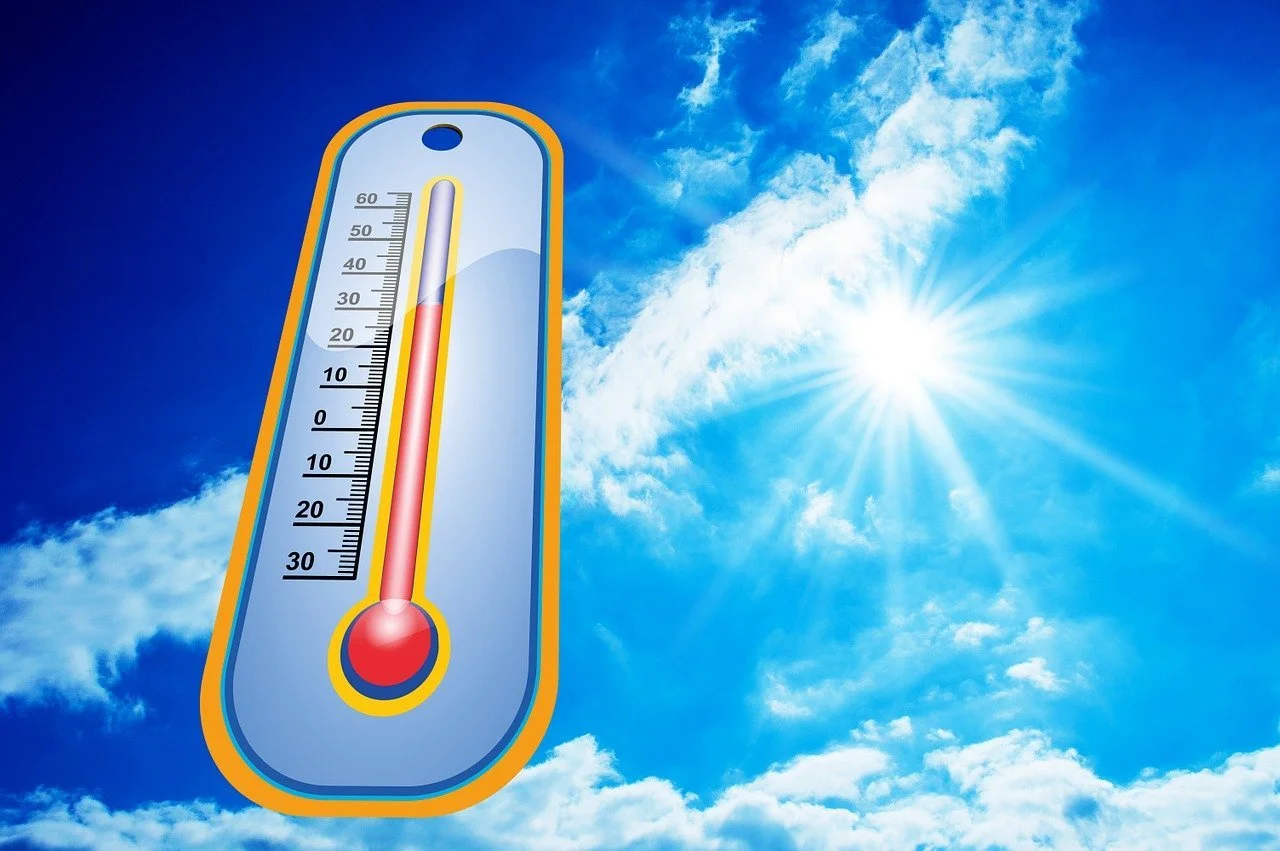Why Wet Bulb Global Temperature Is Becoming Essential for Indoor Health and Safety
As mercury rises on a global scale, heatwaves are making headlines more frequently. High temperatures can create hazardous conditions for people working outside because of heat stress, heat stroke, and other conditions. Commercial building owners and managers like you may believe your HVAC system protects your tenants from heat stress. However, it’s still a risk in athletics, industrial settings, and other commercial buildings.
You can protect your building occupants by monitoring indoor air quality metrics such as temperature, humidity, and wet bulb global temperature (WBGT). Monitoring WBGT allows you to manage the heat in your buildings. This metric plays a critical role in keeping your tenants healthy and happy. Sensor platforms like Attune enable accurate, real-time WBGT tracking. Here's how.
What is Wet Bulb Global Temperature (WBGT)?
WBGT uses the temperature, humidity, wind speed, and sunlight to measure how hot a person feels in their environment. Unlike temperature alone, WBGT offers a more accurate reflection of how a person perceives the temperature.
Picture yourself on an outdoor stroll in early summer. A walk on an 80-degree day with low humidity, ample cloud cover, and a pleasant breeze feels much different than one on an 80-degree day in high humidity with no wind and blazing sunlight.
Your body works harder to cool off in humid environments with no breeze and direct sunlight. High humidity slows sweat evaporation. Direct sunlight heats your skin more quickly, while a breeze helps you cool off.
Who Uses WBGT and Why It’s Gaining Commercial Relevance
Sometimes called global wet bulb temperature, WBGT was developed in the 1950s to help prevent heat-related illness in military training camps. A global wet bulb temperature map will show you that heat across the world is dangerous.
Organizations that oversee worker health and well-being, including the Occupational Safety and Health Administration (OSHA), use this metric to improve safety measures in industries such as construction, aviation, and sports.
WBGT is gaining traction in commercial buildings because it predicts heat stress more accurately. When you manage a property with multiple areas of radiant heat, such as a commercial kitchen or a boiler room in a building, WBGT helps you assess the risk of heat stress to protect your tenants.
What WBGT Measures and How it Works
To measure WBGT, you need a dry bulb thermometer, a static wet-bulb thermometer, and a black globe thermometer. The dry bulb thermometer measures the air temperature in the shade. The wet-bulb thermometer measures humidity and evaporation, and the black globe thermometer measures radiant heat from surfaces, which is a major factor in indoor environments.
How WBGT Differs from Heat Index and Other Metrics
WBGT differs from other measurement standards, such as the heat index, because it calculates more variables. The heat index only measures heat and humidity. It also uses temperatures taken in the shade, so it doesn’t account for how direct sunlight makes your body feel hotter.
Why Wet Bulb Global Temperature Matters for Indoor Environments
Using WBGT indoors will give you a better sense of how hot your tenants feel in a certain area. For example, only measuring the temperature on the manufacturing floor doesn’t account for the radiant heat coming off the machines. When you factor this in, you may discover that your factory floor needs better ventilation or more cooling equipment.
Other indoor environments that increase a worker’s risk of heat stress include construction sites, warehouses, hospitals, and restaurants. Including WBGT in indoor air quality metrics gives you better data to manage temperature and ventilation. You can also use this data in your ESG reporting to showcase how you prioritize occupant safety.
How to Measure Wet Bulb Global Temperature
If you don’t have a WBGT meter, you can take manual readings of your air temperature, relative humidity, wind speed, and solar irradiation. Use a calculator to input the temperature and relative humidity to estimate the wet bulb temperature.
Next, use this formula:
0.7Tw + 0.2Tg + 0.1Td.
Tw = Natural wet bulb temperature
Tg = Globe thermometer temperature
Td = Dry bulb temperature
However, manual calculations aren’t as accurate because they rely on different sensors and devices to collect the data and estimate the wet bulb temperature.
Fortunately, you can purchase WBGT sensors and monitors that collect and transmit the data to a platform that displays a reading. In commercial buildings, place these sensors in areas with high radiant heat, such as a kitchen, a manufacturing floor, or a construction site with poor ventilation. Measure WBGT every hour to know when to give your employees more breaks.
Interpreting WBGT Values and Safety Thresholds
So, at what temperature do conditions become dangerous? Agencies such as OSHA and the Canadian Centre for Occupational Health and Safety have guidelines. For people who aren’t used to working in heat:
Low risk = Temperatures up to 25⁰C (77⁰ F)
Moderate risk = 25⁰C - 28⁰C (77⁰F - 82.4⁰F)
High risk = Greater than 25⁰C (82.4⁰F)
When WBGT hits 80⁰F, start taking action to prevent heat stress. Schedule more frequent breaks and encourage your workers to hydrate. Set up cooling zones where they can go to escape the heat. If the WBGT is too high, consider PPE such as cooling vests and towels.
Practical Ways to Reduce WBGT Indoors
Thankfully, you have more control over your indoor environment than the outdoors. Although you can’t prevent machines from radiating heat, you can use your HVAC system to control the temperature and humidity. The demand for energy-efficient buildings should not come at the expense of tenant health.
Use readings to adjust work/rest schedules and use signage to communicate the dangers of heat stress to your employees.
Turning Data into Action: How Attune Helps You Use WBGT Monitoring
Attune’s multi-sensor platforms record all WBGT inputs and send them to an app so you can monitor them in real time. Our cloud-based platform sends alerts when WBGT reaches unsafe levels.
If you manage a school, fitness center, or an industrial space, add these sensors to other indoor environmental management technology to help your tenants stay safe. Our sensors are also adaptable to other air quality monitoring metrics, including carbon dioxide, volatile organic compounds, and humidity, allowing you to measure all aspects of building health. Include all your smart building metrics in one report.
Contact us today to start making your tenants safer.


